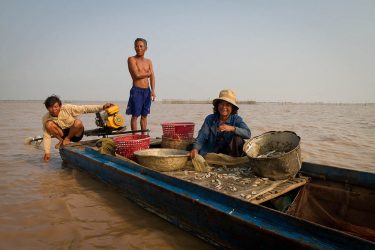
Nearly 100 hydropower dams are planned for construction along the tributaries and main stem of the Mekong River’s 2,700-mile stretch. The river, one of the world’s largest, flows through Burma, China, Vietnam, Laos, Thailand and Cambodia. It is an economic engine for fishermen and a food source for millions of people worldwide. While the dams are expected to provide clean energy to the region, if not managed properly they also have the potential to offset natural river patterns, which would damage food production, supply and business.
The University of Washington, Arizona State University and other collaborators have proposed a solution to this problem in the Dec. 8 issue of Science that allows dam operators to generate power in ways that also protect — and possibly improve — food supplies and businesses throughout the Mekong river basin. The proposed solution, the first of its kind for this problem, can be applied to other large river systems around the world facing similar tradeoffs.
“We have taken this conversation around fisheries and dams in the Mekong from a yes-or-no conversation, from a good idea-bad idea conversation, and we have come up with an alternative, a mathematical formula that has the possibility to achieve dam operator goals and protect fisheries,” said co-author Gordon Holtgrieve, a UW assistant professor at the School of Aquatic and Fishery Sciences.
Read more at UW Today »
